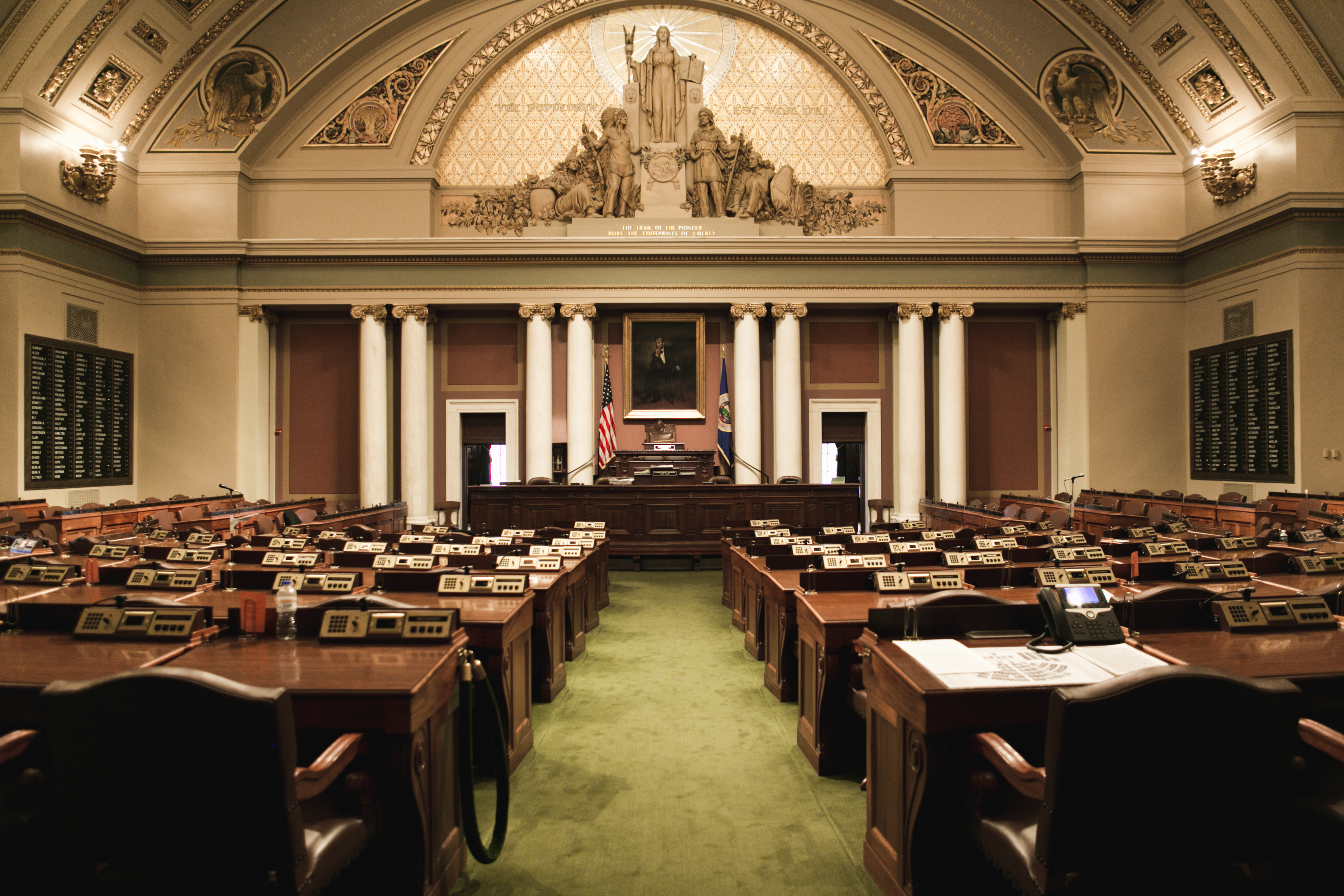After a new era of statewide leadership was sworn into office this week, legislators unveiled their priorities and brought forth the first set of bills.
Gov. Tim Walz took the oath of office on Monday and began his quest to create his vision for “One Minnesota.” Lt. Governor Peggy Flanagan became the highest ranking elected Native American in the country.
Keith Ellison was sworn in as our new Attorney General and Julie Blaha became the new State Auditor. Steve Simon is the only returning statewide office holder in his role as Secretary of State. Four new faces in key roles are sure to bring new direction for the state.
Legislative Priorities
While the House and Senate both brought forward ideas in similar areas such as early childhood education and school safety, the direction each body took is a different path and a different focus.
The House DFL wants to spend a significant amount of new money on child care assistance and early learning programs. The Senate GOP wants to tackle child care regulations and create grant options to build child care capacity. Minnesota is the only state in the nation that has a divided legislature and it clearly shows with the initial volley of new legislation.
One area of agreement is around spending significant new money on expanding rural broadband access. Majority members in both bodies introduced legislation to spend $70 million on rural broadband access grants.
Hearings To Begin
Committees in both bodies in the next week will conduct overview and ‘meet and greet’ hearings. These hearings are designed to get new members up to speed on their relative subject matter and to introduce interest groups to them. MREA will presenting at several hearings this week.
Here’s a closer look at the significant education related bills introduced by majority members in the House and Senate last week.
House First Day Bill Introductions—a selected list—View all 31
HF 1 Great Start—Chief Author: Rep. Carlie Kotza-Witthuhn
For schools, the big news is the increase in the capped number of Voluntary Pre-K (VPK) participants from 6,160 to 7,160 and making the funding ongoing. This should mean that schools that got in the School Readiness Plus program under VPK rules will continue to receive funding beyond June 30.
HF 1 also includes the following provisions:
- Pre-natal care access increase $5 million for 2020 and 2021
- Home visiting for pregnant women and families
- Young children $23 million in ’20, $46 million in ’21, $56 million added to the base
- Increases family eligibility for child care assistance to 400% of federal poverty rates and increases provider reimbursement to 75% of market survey (up from 25%)
- Provides grants to increase child care availability (50% metro, 50% rural) $5 million for ’20 and ’21
HF 2 Education Finance—Chief Author: Heather Edelson
This bill primarily extends grant funded programs into 2020 and 2021, and some beyond. These include:
- School Linked Mental Health $5.12 million in ’20 and ’21
- Support Our Students $12.133 million in ’20
- Full Service Community Schools $15 million in ’20 and ’21
- Homework Starts with Home $4 million in ’20 and ’21
- Collaborative Urban and Greater Minnesota Educators of Color $6 million in ’20 and ’21
- Grow Your Own Programs $8.5 million in ’20 and ’21
- At least $3 million for districts with >30% students of color or American Indian
- At least $3 million for districts with >25 students of color or American Indian
- At least $500,000 for secondary schools to develop introduction to teaching concurrent enrollment and high school and middle school future teacher clubs involving students of color or American Indian
Two other key bills included:
- HF 7: Broadband Grant Program—Chief Author: Rob Ecklund
$35 million for broadband grants in ’20 and ’21. - HF 16: Modifications to Small Schools Revenue (SSR)—Chief Author: Dean Urdahl, Second Author: Julie Sandstede
This bill indexes SSR to 10 percent of the formula—up from $544, raises the sweet spot of the formula to 750 Adjusted Pupil Units (APU) and extends funding to districts under 1,500 APUs. What is significant is the second author, Julie Sandtede is the DFL Vice Chair of the House Education Finance Committee. This is a clear sign that the support for increasing support for small schools is bi-partisan among rural legislators.
Senate First Day Bill Introductions—a very selected list—View all 91
- SF 7: School Safety—Chief Author: Carla Nelson
This is very close to what was in the vetoed omnibus bill last year, but leaves unstated the amount of the increases in aid per pupil. It does add aid (again an undetermined amount) for cooperatives which serve students that are not intermediate districts. - SF 9: Broadband Grants—Chief Author: Mark Koran
$35 million for broadband grants in ’20 and ’21. - SF 12: Physical Security Audit Grants for Public Schools—Chief Author: Carrie Ruud
$2 million in grants for reimbursement grants to public school districts that contract for audits of the physical security of public school campuses. - SF 15: Recruiters Access to Secondary Students—Chief Author: Michael Goggin
This bill is similar to what was in the vetoed omnibus bill requiring school districts to provide certain access to career options in the military, skilled trades, and manufacturing.





